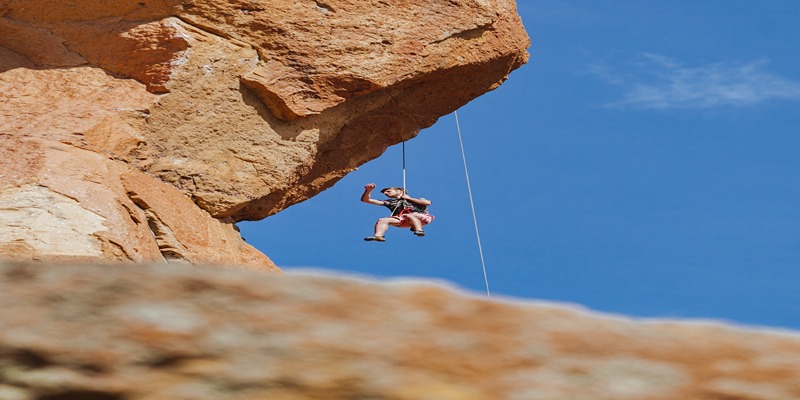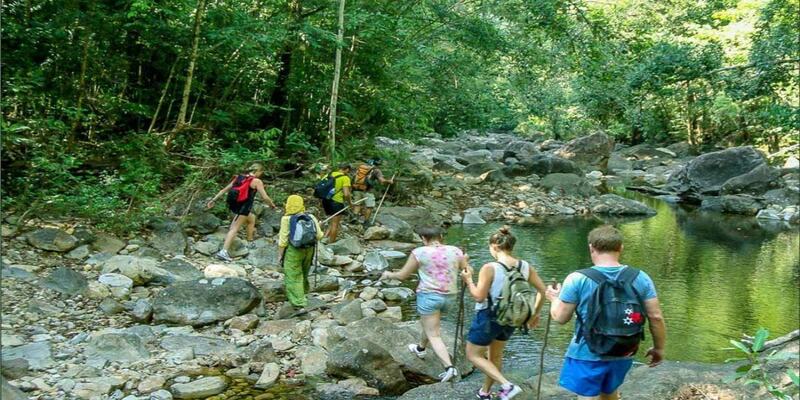New Delhi, India's busy capital, is synonymous with pictures of crowded streets and impressive buildings and monuments. A new story, however, is largely overlooked by the media: Delhi's emergence as a center for extreme sports, especially rock climbing. There has been a spike in local interest in this activity, which has evolved from being a simple pastime into a serious means of personal development. Notably, rock climbing is only one of several new outdoor activities available in Delhi. Delhi now offers a far wider variety of adventure activities, from paddle sports on the Yamuna River to paragliding above the metropolis. However, rock climbing stands out due to its unique allure as a medium through which human skill may be transformed via contact with the natural environment.

The Elemental Adventure: Why Rock Climbing?
The perfect balance of difficulty and adrenaline may be found in rock climbing. Due to the simplicity of the activity—just one person and a rock—the climber is free to focus only on their ascent, which provides both a literal and metaphorical sense of ascent. The challenge and success of climbing to new heights, propelled by adrenaline, strengthens the mind and body. When compared to other types of extreme sports, however, these advantages are still unparalleled. Rock climbing is an exciting individual competition between the climber and geologist, requiring a special mix of mental strategy and physical skill. Climbing encourages a solitary kind of bravery in contrast to team-based activities. Each footing and grip reveals new challenges, and it will need a combination of physical skill and mental fortitude to conquer them.
Topographical Facets: Types of Climbing Surfaces in Delhi
Delhi's varied terrain is a major factor in the city's ability to serve a wide spectrum of rock climbers. Crags, cliffs, and artificial indoor walls are the three main forms of climbing terrain that reflect this variety. Crags are naturally occurring rock formations ideal for beginner and intermediate climbers, and they may be found at the periphery of the wilderness that surrounds Delhi. In order to be adequately prepared for more difficult trips, people might use these surfaces to familiarize themselves with genuine rock conditions.
In contrast, cliffs heighten the difficulty by adding a new dimension of technical intricacy. Climbers with a solid grasp of technique and strength should save them for when they want to take their game to the next level. The regulated conditions of indoor climbing walls make them ideal for training. They're great for beginners who want to hone their talents without having to deal with the hazards of the outdoors.
Ascending Through the Capital: New Delhi Climbing Spots
Delhi is a rising rock climbing mecca, and its many different climbing areas are a testament to it. The Sanjay Van Forest, Damdama Lake, and the Old Rocks of Lado Sarai are three of the most popular destinations. Lado Sarai Old Rocks is especially convenient since it is so close to the heart of the city. It has a wide variety of routes that range in difficulty, making it appropriate for climbers of all skill levels. In contrast, the Sanjay Van Forest is a quiet retreat surrounded by verdant trees and shrubs. Climbing in Damdama Lake is enhanced by the appeal of water activities.
Beginner Climbs: Establishing Your Foothold
Delhi's many indoor climbing facilities are a great place for beginners to get their feet wet in the sport. These establishments provide initial classes and the fundamental equipment required for a secure ascent. The less challenging climbs at Lado Sarai Old Rocks are a viable alternative to confined spaces. In this area, you'll find surfaces that are easy on the hands and feet, perfect for practicing your grip strength. Climbing under an expert's supervision and with a complete set of protective gear, including a helmet, harness, and carabiners, is still essential, especially for beginners.

Intermediate and Advanced Climbs: Push Your Limits
The cliffs around Damdama Lake have a number of routes for the adventurous with the right mix of strength, technique, and mental fortitude. The most remote areas of Sanjay Van also provide challenging climbing difficulties that need advanced skills like lead climbing and belaying to solve. Climbers at this level must be aware of their weaknesses but not afraid to test their limits. Climbing to new heights (both physically and figuratively) frequently requires trying out new techniques and strategies.
Gear and Preparations: Equip Yourself for Ascent
In order to ensure a safe and successful rock climbing adventure, one must make extensive preparations in advance. Essential gear, including a climbing harness, helmet, and climbing shoes, are required for climbers of all skill levels. In addition, a set of quickdraws, carabiners, and a trustworthy rope are often essential for the vast majority of outdoor climbing endeavors. High-quality equipment is worth the investment since low-quality tools pose a safety risk.
Getting ready entails more than just stocking up on supplies. It is nevertheless essential to have a full medical checkup before attempting strenuous ascents. Essential climbing skills and rescue procedures should also be familiarized with. It's also a good idea to scope out the climbing area for potential dangers like loose rocks or uneven ground. A well-planned route that accounts for bad weather and other potential obstacles may greatly improve climbers' safety and enjoyment.
Regulations and Etiquette: Treading Responsibly
There are rules and a code of behavior that must be followed in order to safely climb in New Delhi. Climbing without the proper authorization is illegal in several regions, including those that are within or near protected forests. In many cases, climbing groups or government agencies in the area where you live may help you get the paperwork you need.
Responsible environmental care is a further implication of ethical climbing. The preservation of these wild climbing havens is aided by minimalist habits, such as not using chalk, not littering, and keeping a safe distance from local fauna. Adherence to these standards promotes a culture of responsible and environmentally friendly adventure sports in the nation's capital and secures the survival of climbing areas.
Conclusion
Delhi's rock climbers are on an upward trend, which bodes well for the future of their small but rapidly expanding adventurous activity. The capital is seeing a proliferation of climbing-focused groups that provide clinics, excursions, and classes for the city's growing climbing population. This newfound enthusiasm might make Delhi a destination for climbers from all around the country. The sport is ready to carve itself a permanent and prominent niche within Delhi's varied tapestry of outdoor recreational activities as infrastructure support continues to improve and public awareness grows.




